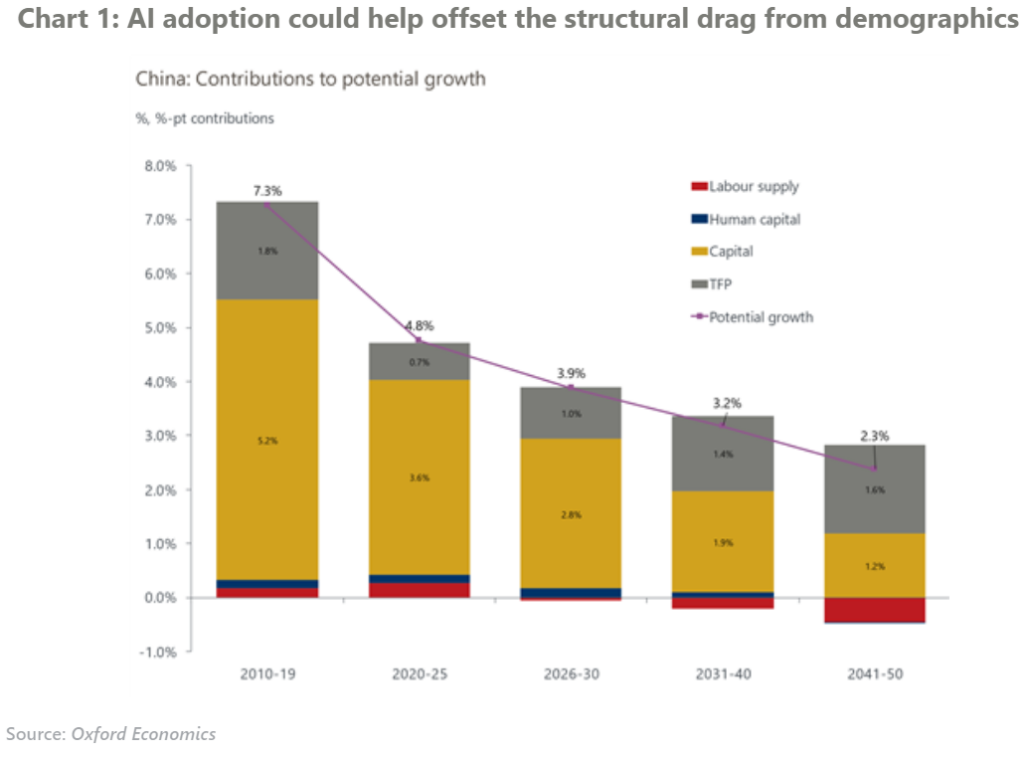Rethinking China’s productivity prospects in the era of AI
Adverse demographic trends imply that the only alternative for sustaining China’s longer-term growth momentum would be to sharply accelerate productivity growth. The timely emergence of generative AI could partially close this gap.
What you will learn:
- Institutionally, China appears set up to reap the productivity gains of AI. However, this undoubtedly comes up against the rising, and persistent, external headwind posed by Western allies’ restrictions on the access and transfer of technology and knowledge into China.
- We had previously underestimated the impact of AI in our longer-term China macro forecasts. Following a reassessment, we now expect the Chinese economy to be more than 6% larger than in our June baseline by 2050, slowing towards but staying above a 2% annual growth pace until then.
- These upgrades to the medium-term China forecast are still just a sobering fraction of the growth exceptionalism baked into our US team’s recent forecast changes, reflecting primarily the US’ more advanced infrastructure and human capital levels that necessarily drives higher AI preparedness and a faster adoption timeline compared to China.

Tags:
Related Posts

Post
Asia Pacific: Exports are Riding the AI Frenzy
Asia has been at the forefront of the recent global AI frenzy. That partly reflects the region's importance in global semiconductor supply chains. Global companies specialising in different stages of production can be found across Asia.
Find Out More
Post
2024 EY CIO Sentiment Study: Sentiment in the age of GenAI
Oxford Economics, in partnership with EY, conducted a survey in early 2024 to gather insights into how CIOs from leading organizations are navigating challenges faced in achieving growth agendas in an age of rapid technology advancement.
Find Out More
Post
How GenAI will change the world economy
Generative AI has the potential to substantially improve the medium-term growth outlook for the economy. It arrives at a perfect moment – labour is going to be less supportive of growth as aging dynamics hit home and productivity is flagging.
Find Out More